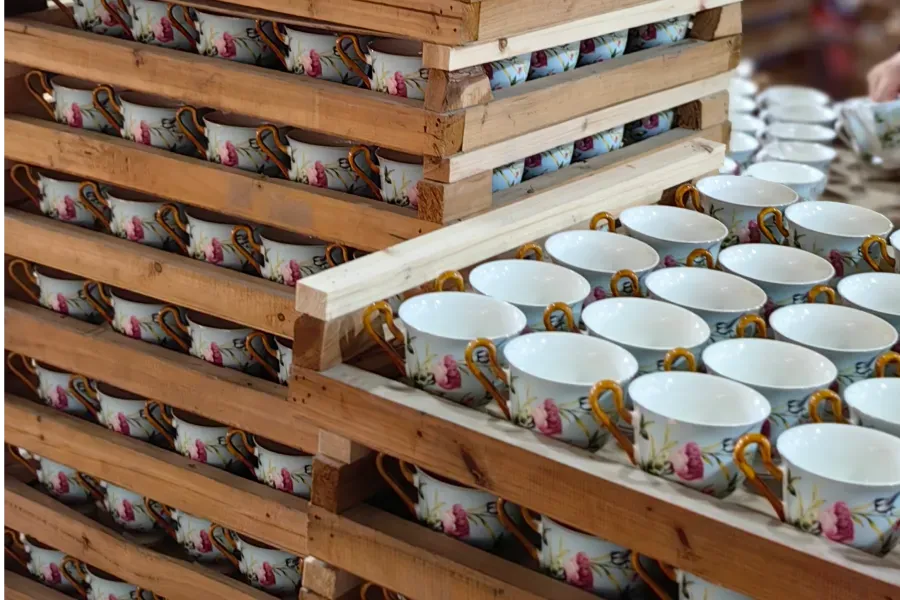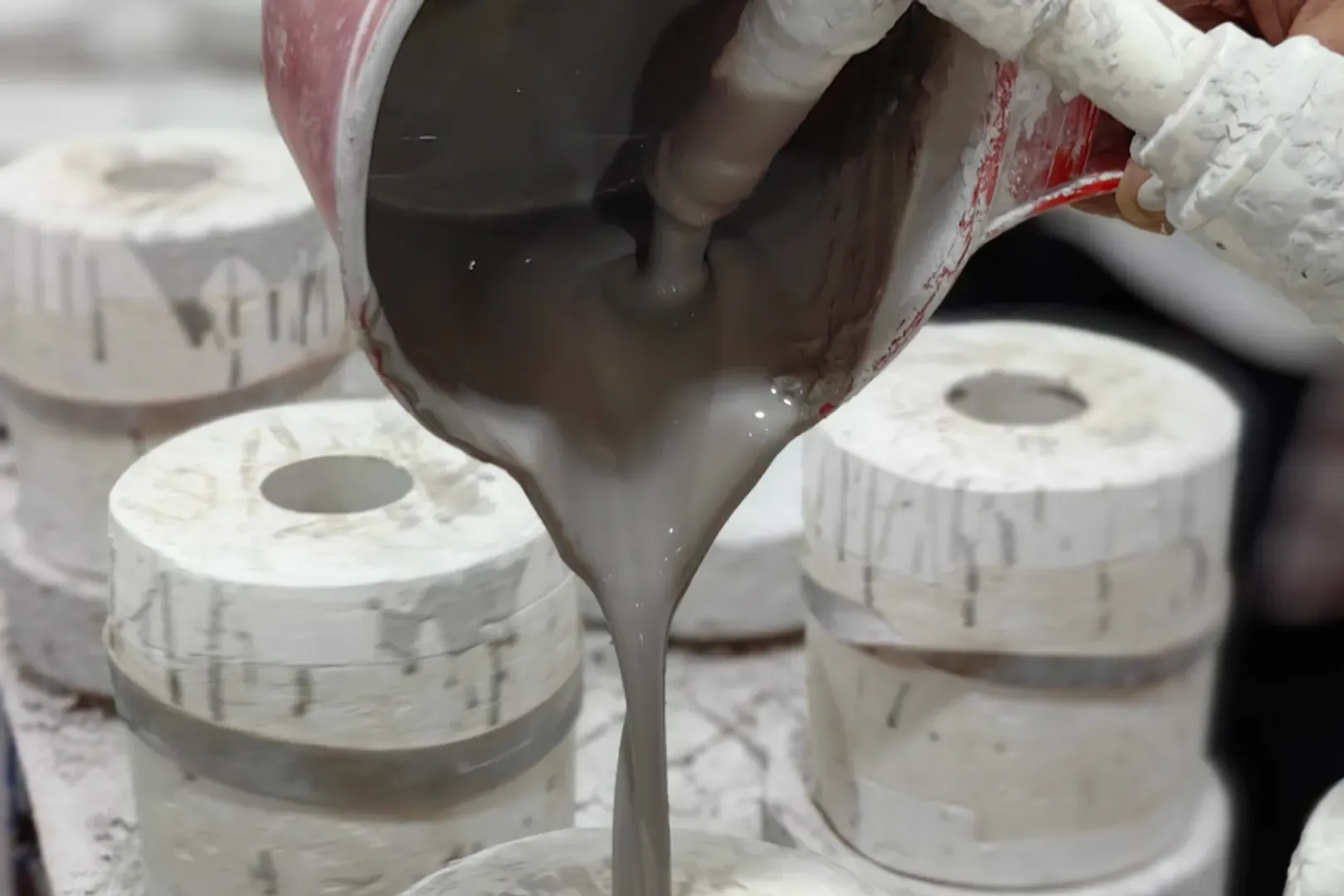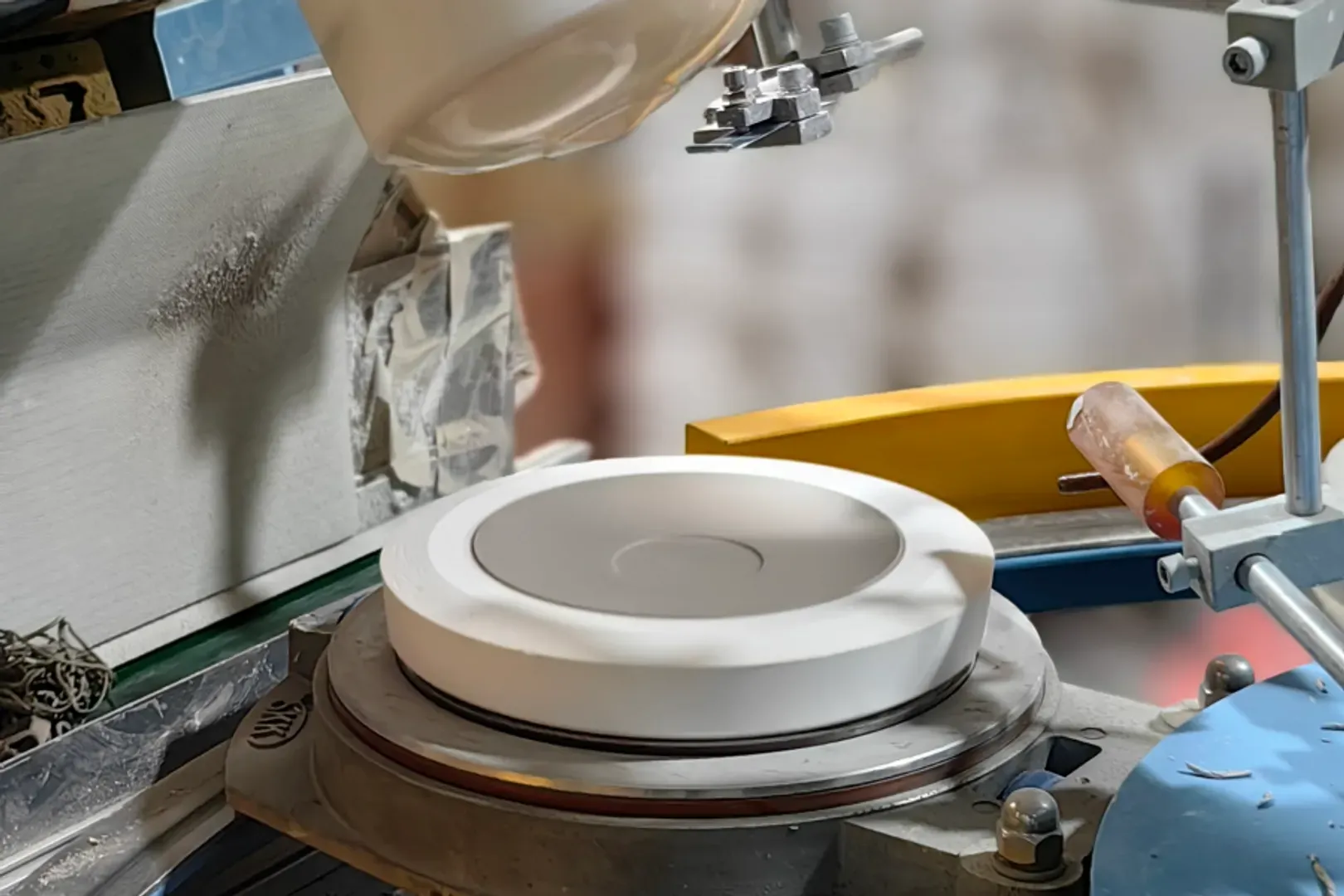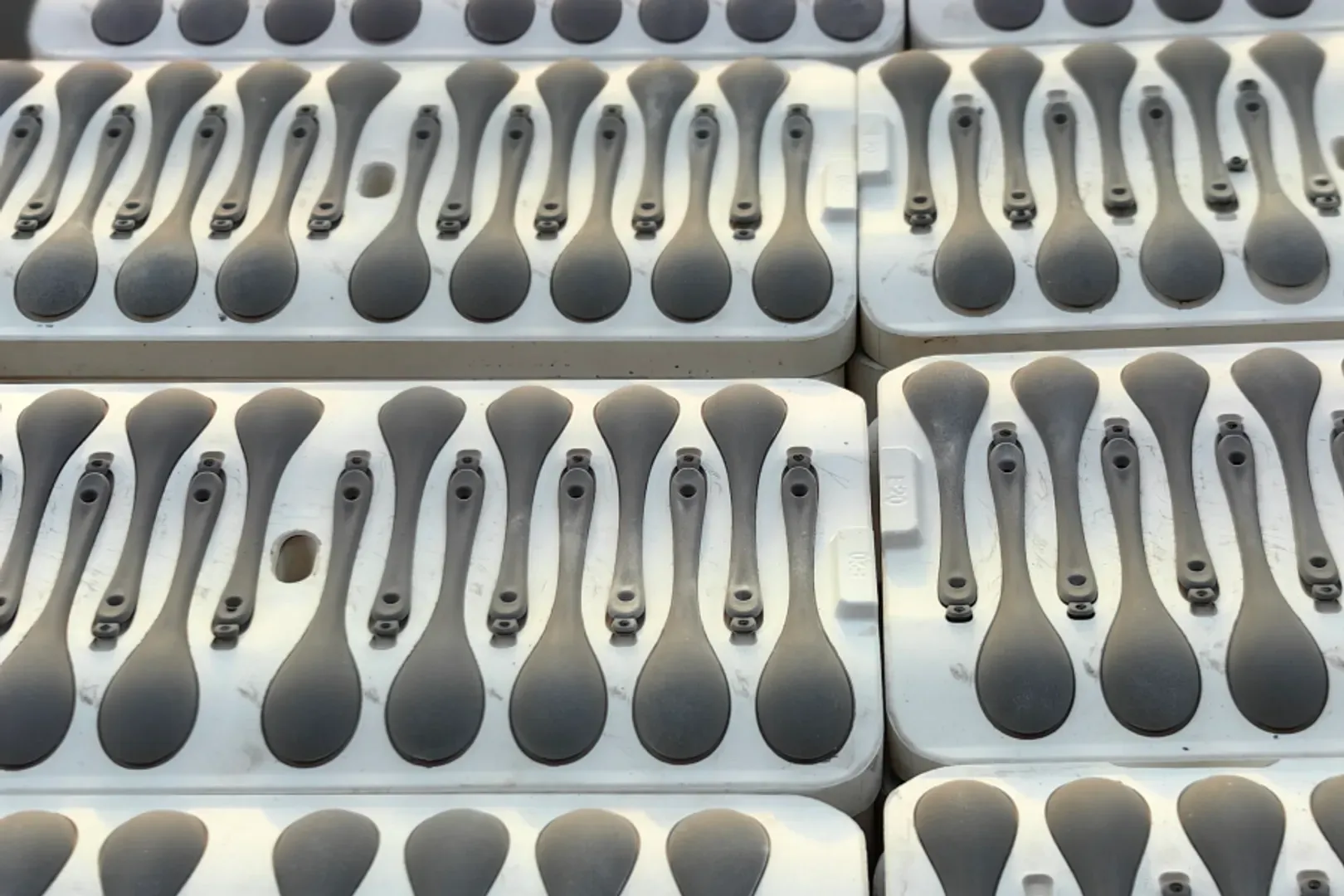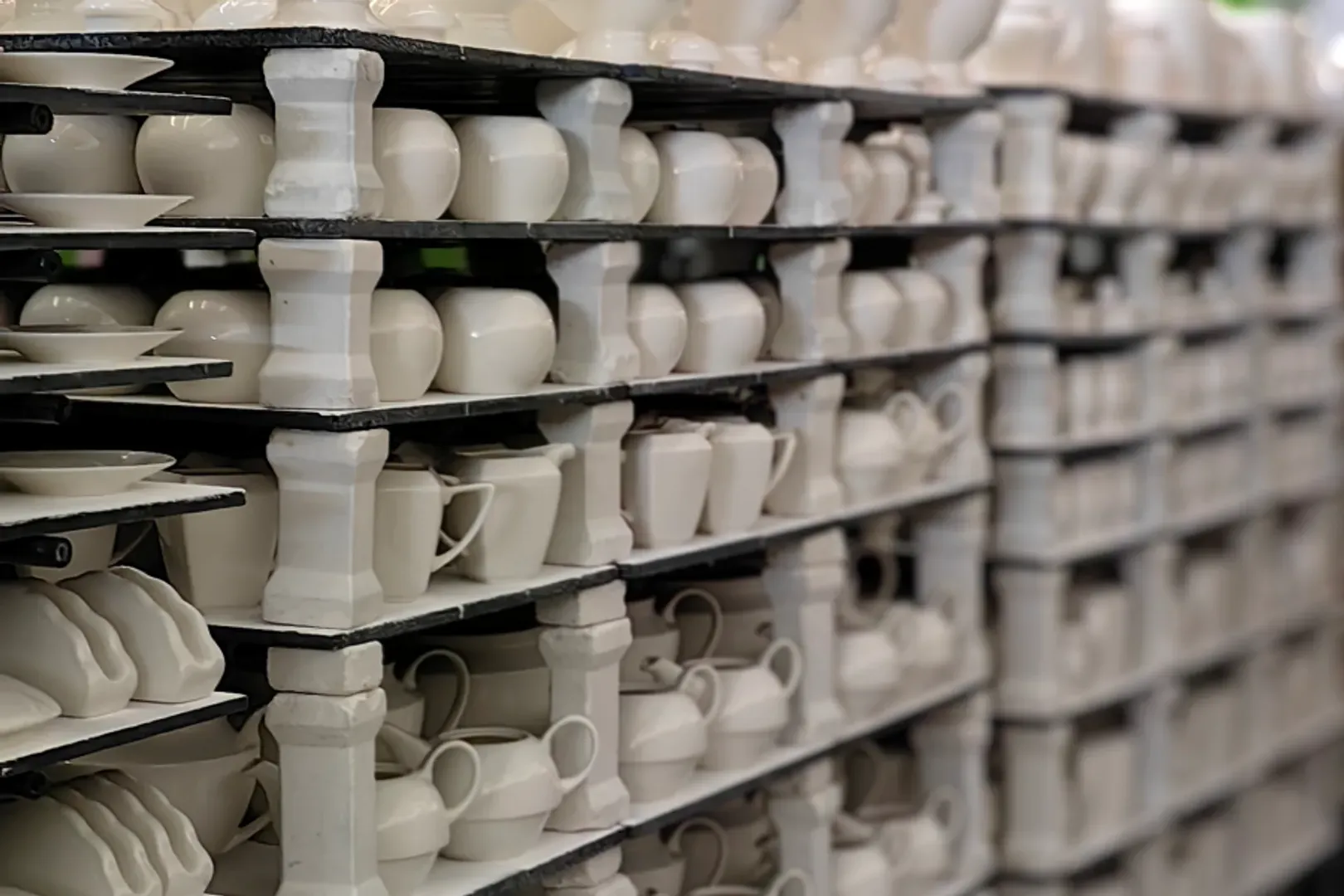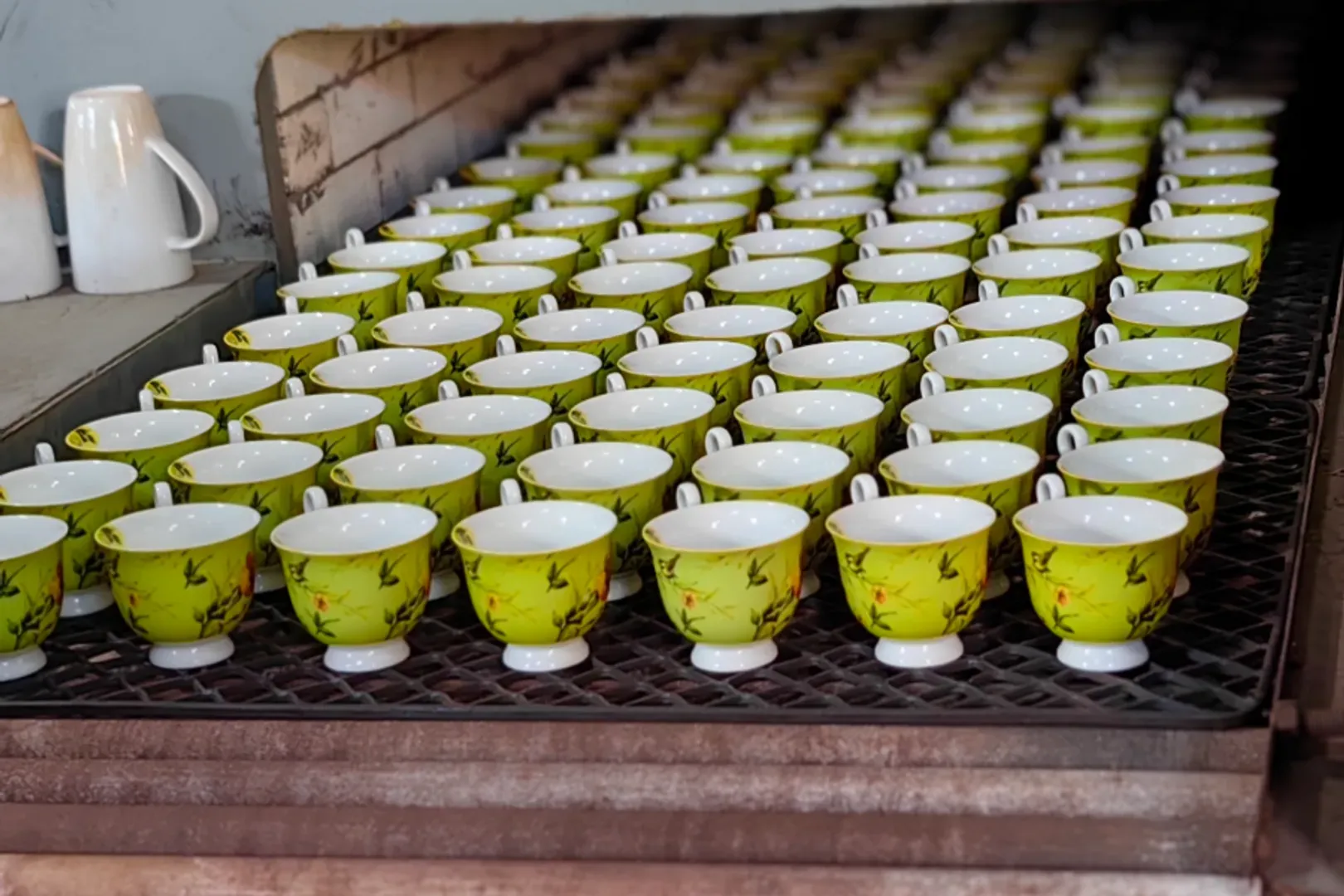
Отправить запрос
How Is Ceramic Tableware Made?
Have you ever wondered how the beautiful ceramic tableware in your kitchen was made? The process of creating ceramic tableware is fascinating. It involves precision and skill. From raw materials to the finished product, it's a journey worth exploring.
In this article, we will delve into the intricate steps involved in making your favorite plates, bowls, and mugs. So, grab a cup of tea and get ready to learn about the art of ceramic tableware production.
What are Raw Materials for Ceramic Tableware Manufacturing Production?
The production of ceramic tableware primarily hinges on the selection and preparation of key raw materials. These materials include various types of clay, feldspar, kaolin, and other essential minerals, each contributing unique properties to the finished product. Here's a breakdown of these crucial components:
Clay: The backbone of all ceramic products, clay provides the plasticity needed for molding into various shapes. Different types of clay such as ball clay, which is highly plastic and fires to a white or near-white color, and stoneware clay, known for its durability and strength, are chosen based on the desired qualities of the tableware.
Feldspar: Acting as a flux in the ceramic body during firing, feldspar helps the other components to melt and bond together at lower temperatures. It is vital for increasing the strength and transparency of the ceramic body and for promoting the formation of glass phase that cements the structure.
Kaolin: Also known as china clay, kaolin is a key ingredient that adds whiteness and non-plasticity, improving the workability of the clay. It's crucial for enhancing the finished product's resistance to deformation under heat.
Other Minerals: Depending on the type of tableware and the required characteristics, other minerals like quartz (silica), talc, or grog (pre-fired ceramic material) might be added. Quartz helps in structural integrity and temperature transformation, while talc is used to improve the texture and firing properties of the ceramic body.
Selection and Processing of Raw Materials
The selection process for these raw materials is rigorous. Each component is evaluated for purity, particle size, and mineral composition to ensure it meets stringent quality standards. The raw materials are then processed to remove any impurities. This typically involves:
Washing: To eliminate dust and soluble salts.
Blending: Different raw materials are blended to achieve a consistent and uniform mixture.
Milling: The raw materials are ground into a fine powder to ensure that they mix thoroughly and react well during firing.
This meticulous preparation of raw materials is essential for ensuring the uniformity and quality of the ceramic tableware. These steps not only affect the aesthetic aspects, such as color and texture, but also impact the functional attributes like durability and resistance to heat and chemicals.
What Equipment is Used in Ceramic Tableware Production?
In ceramics manufacturing, there are specific equipment used for different processes. To begin, ceramic materials must be carefully sorted and stored to maintain their integrity. These materials are then combined with other ceramic components to create the compound used in manufacturing. Several essential pieces of equipment are typically used in ceramic production:
Storage containers: These containers are used to store and organize the ceramic materials, ensuring they remain in optimal condition.
Milling machine: A milling machine is employed to grind and mix the ceramic materials, achieving the desired consistency and uniformity.
Industrial press or casting machine: This equipment is utilized to shape the ceramic compound into the desired form, either through pressing or casting methods.
Drying station: After shaping, the ceramic products need to be dried thoroughly. A dedicated drying station facilitates this process, removing excess moisture and preparing the ceramics for further production stages.
Glaze applicator: Applying glaze to ceramic products enhances their appearance and provides a protective layer. A glaze applicator is used to evenly distribute the glaze onto the ceramics.
Sintering oven: Sintering is a crucial step in ceramic manufacturing, where the shaped ceramics are subjected to high temperatures to fuse the particles together. A sintering oven provides the controlled heat necessary for this process.
Inspection table: Once the ceramics have undergone the manufacturing process, they are inspected for quality assurance. An inspection table allows for thorough examination, ensuring that only flawless products move forward.
These equipment pieces are essential for creating ceramic products on an industrial scale. They enable precise control over the manufacturing process, resulting in refined ceramics with minimal impurities.
Ceramic Tableware Manufacturing Techniques
Variety of Techniques: Molded vs. Handcrafted
There's a significant difference between molded and handcrafted ceramics. Molded pieces are uniform and perfect for large-scale production, while handcrafted items are unique and valued for their artisanal quality.
Common Methods: Slip Casting, Dry Pressing, Injection Molding
Slip casting, dry pressing, and injection molding are common methods in ceramic tableware production.
- Slip casting involves pouring a ceramic mix into molds to set.
- Dry pressing compresses dry ceramic materials into molds.
- Injection molding injects molten ceramic into molds under high pressure.
These methods differ in mold type and mix consistency.
Each technique is crucial for forming ceramic plates and tableware with precision and durability.
- Slip casting is ideal for intricate designs.
- Dry pressing ensures product uniformity.
- Injection molding is efficient for complex shapes.
Generally speaking, slip casting is ideal for complex shapes, dry pressing suits large-scale, uniform production, and injection molding is used for high precision and detail. By using these techniques, manufacturers improve ceramic dinnerware functionality and style, enhancing the dining experience.
Processing Steps in Ceramic Tableware Production
The production of ceramic tableware is a complex and meticulous process involving several key steps. Each step is critical in shaping the final product's quality and appearance. Here's a detailed look at the main stages in the processing of ceramic tableware:
1. Milling and Sizing of Raw Materials
Before any shaping can occur, the raw materials, such as clay, feldspar, and kaolin, must be ground to a fine powder. This is typically done using a ball mill. The fine particle size ensures that the materials can be mixed thoroughly and react uniformly during the firing process, which is crucial for the strength and durability of the final product.
2. Batching and Mixing Processes
The ground materials are then carefully weighed and proportioned according to specific recipes that determine the physical and chemical properties of the finished tableware. Water and other additives are introduced during the mixing process to form a slip (a liquid mixture of clay and water) or plastic body, which can be molded into various shapes. The homogeneity of this mixture is critical for ensuring consistent quality across batches of products.
3. Forming and Shaping of Ceramic Products
The mixed ceramic body is then shaped into tableware. Several methods can be employed depending on the product type and desired characteristics:
- Slip Casting: Used for complex shapes, where the liquid slip is poured into plaster molds to absorb excess water and form a hard outer shell.
- Jiggering: Suitable for symmetrical items like plates and bowls, involving a rotating mold that forms clay body placed on it under a fixed profile tool.
- Pressing: Both dry and isostatic pressing are used to form denser and more uniform products.
- Hand Throwing: An artisanal method used for unique, handcrafted items.
4. Drying
After forming, the items must be dried to remove most of the moisture content. This is a delicate process as uneven drying can lead to warping or cracking. The drying is done slowly and can take several days, depending on the size and thickness of the items.
5. Bisque Firing
Once dry, the items are subjected to a first firing, known as bisque firing, in a kiln. This firing removes all the remaining water and hardens the body, making it porous and ready to accept glazes. The temperature and duration of this firing are carefully controlled to avoid defects like bloating or deformation.
6. Glazing
After bisque firing, a glaze is applied to the surface of the ceramics. Glazes can be applied by dipping, pouring, or spraying and can vary in color, texture, and finish. The choice of glaze not only affects the product's aesthetics but also its functionality, as it makes the surface stain-resistant and waterproof.
7. Glaze Firing
The glazed items are fired again at higher temperatures to mature the glaze. This second firing vitrifies the glaze, making it glassy and bonding it strongly to the bisque. This step is critical as it determines the visual appeal and the longevity of the glaze.
Each of these steps requires precision and control. The careful management of these processes ensures that the final products are not only beautiful and unique but also durable and suitable for everyday use.
Magnoble Ceramic Tableware Manufacturing Process
The Magnoble Ceramic Tableware Manufacturing Process is a detailed and carefully calibrated sequence that combines traditional craftsmanship with modern technology to produce high-quality ceramic products. Below are the key steps involved in this specialized manufacturing process:
1. Injection Moulds Production
Magnoble utilizes advanced injection molding technology to produce detailed and precise ceramic shapes. This method involves injecting a liquid clay mixture into a plaster mold under high pressure.
2. Rolling
For the production of flat items like plates and platters, Magnoble employs a rolling technique. Clay slabs are rolled out to ensure uniform thickness and smooth surfaces.
3. Pressed Moulds Production
Pressed molds are used for items that require high definition and intricate details, such as embossed designs. In this process, a clay slab is placed into a mold and mechanically pressed into shape, allowing for precise control over the thickness and detailing of the ceramic piece. This method is particularly useful for decorative tableware elements.
4. Clay Firing
Once shaped, the ceramic pieces undergo an initial firing, known as bisque firing, in high-temperature kilns. This step is crucial as it hardens the clay, making it more durable and less porous. The firing parameters are carefully controlled to prevent any deformities and ensure uniformity in the ceramic body.
5. Decal Firing
After bisque firing and glazing, Magnoble applies ceramic decals to the products. These decals can include intricate patterns or colorful artwork that enhances the aesthetic appeal of the tableware. The decal-applied items are then fired again at high temperatures. This second firing melts the decal onto the glaze, integrating the design permanently into the surface.
Wrapping up
Understanding these processes highlights the extensive work and artistic consideration behind every piece of ceramic tableware, making it not just a dining accessory but a piece of culture and artistry.

